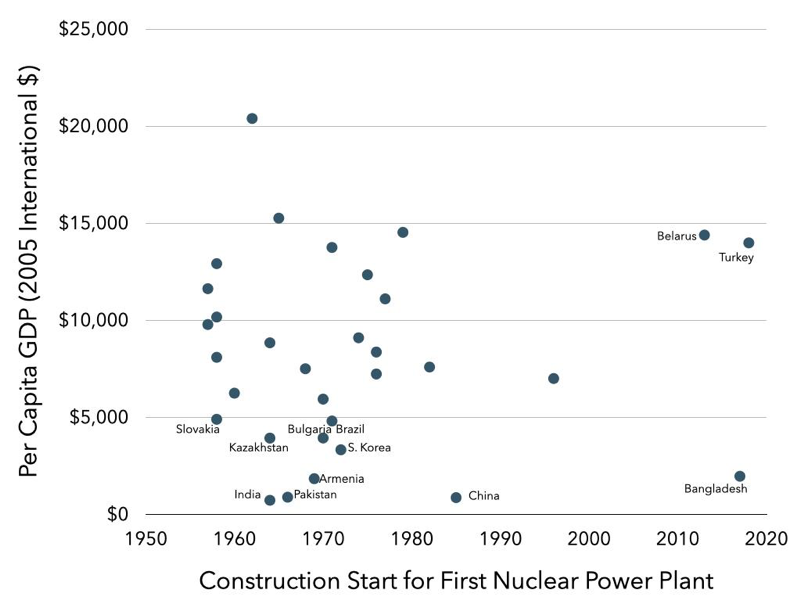The debate over which countries should pursue nuclear energy is timely because the U.S. International Development Finance Corporation (DFC) is considering lifting its prohibition on financing nuclear power projects. One potential concern is whether nuclear technology is appropriate for the DFC’s target markets or whether this technology is only for wealthier countries. While nuclear power is common in many wealthy countries, there is a long history of lower income countries importing nuclear power plants very early in their economic development to spur industrialization and growth.
Of the 37 countries with commercial nuclear power programs, only four — the US, Russia, Britain, and Canada — were developed domestically. Every other country has started its nuclear program by importing its first reactor, much like what is being proposed today. Significantly, India, Pakistan, and China all had per capita GDPs under $1,000 (in 2005 International dollars) when they began construction on their first nuclear power plants in 1964, 1966, and 1985 respectively. Brazil and South Korea imported Westinghouse reactors from the US when per capita GDP was below $5,000. In total, nearly a full third of countries with commercial nuclear power today began when they were below $5,000 GDP per capita.
This trend continues today. Bangladesh began importing reactors from Russia in 2015 when its per capita GDP was just $2,000. There are over thirty new countries currently looking at nuclear power to address their energy needs, and most are seeking international partners for their first projects. Of course, Saudi Arabia shouldn’t need DFC to build nuclear power plants. But countries like Kenya and Ghana are actively interested in nuclear power and also have per capita GDPs below $2,000. Of the countries pursuing commercial nuclear power programs today, about 50% have per capita GDPs less than $5,000 and more than two-thirds are below $10,000.
Having the US involved in these first projects, whether through the DFC or US companies supplying the technology, could accelerate energy access and economic development in low-income countries. Perhaps equally important, such support could strengthen partnerships between the US and these countries and establish collaborations that will last decades.
FIGURE 1: History of nation’s GDP per capita at start of commercial nuclear power program


